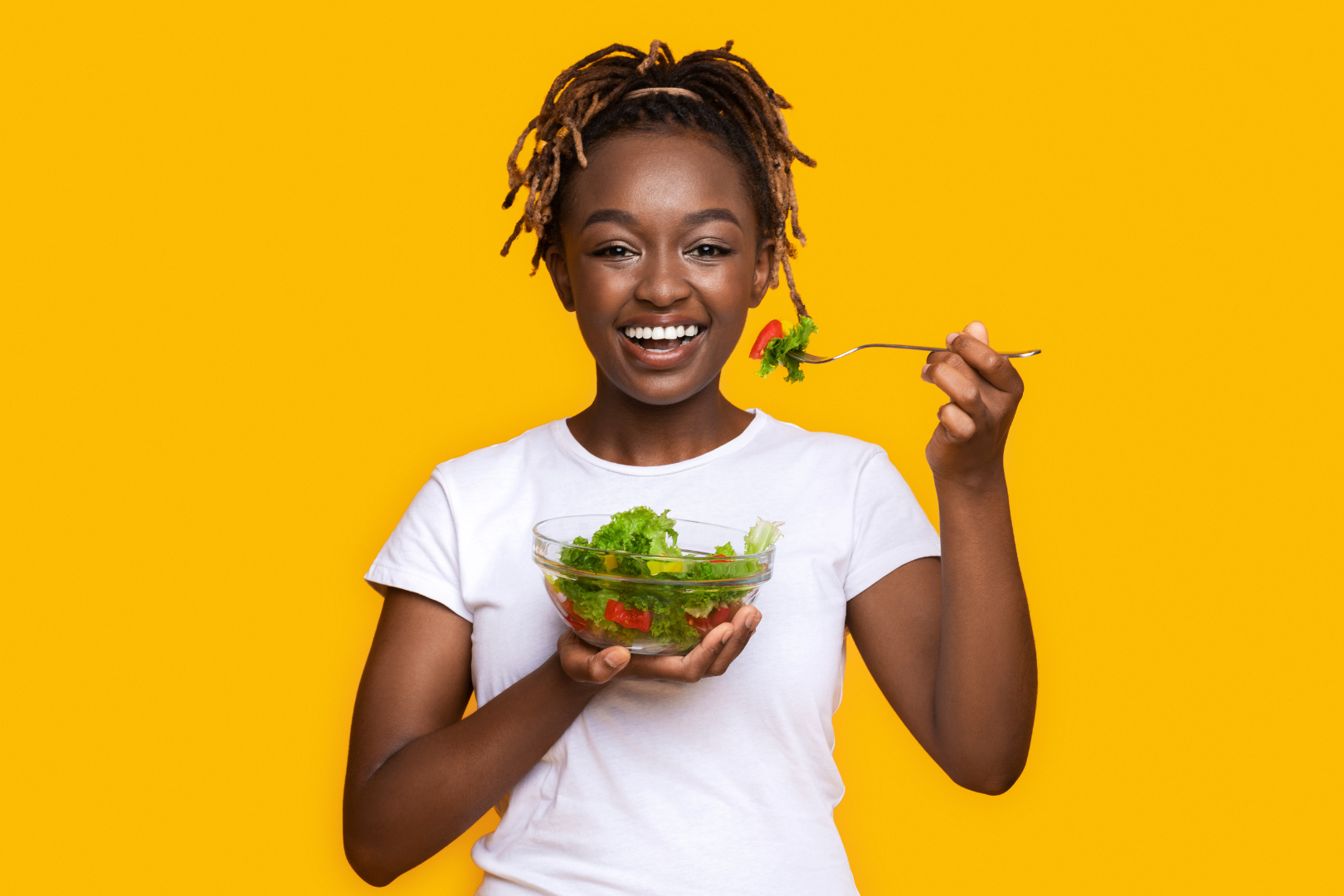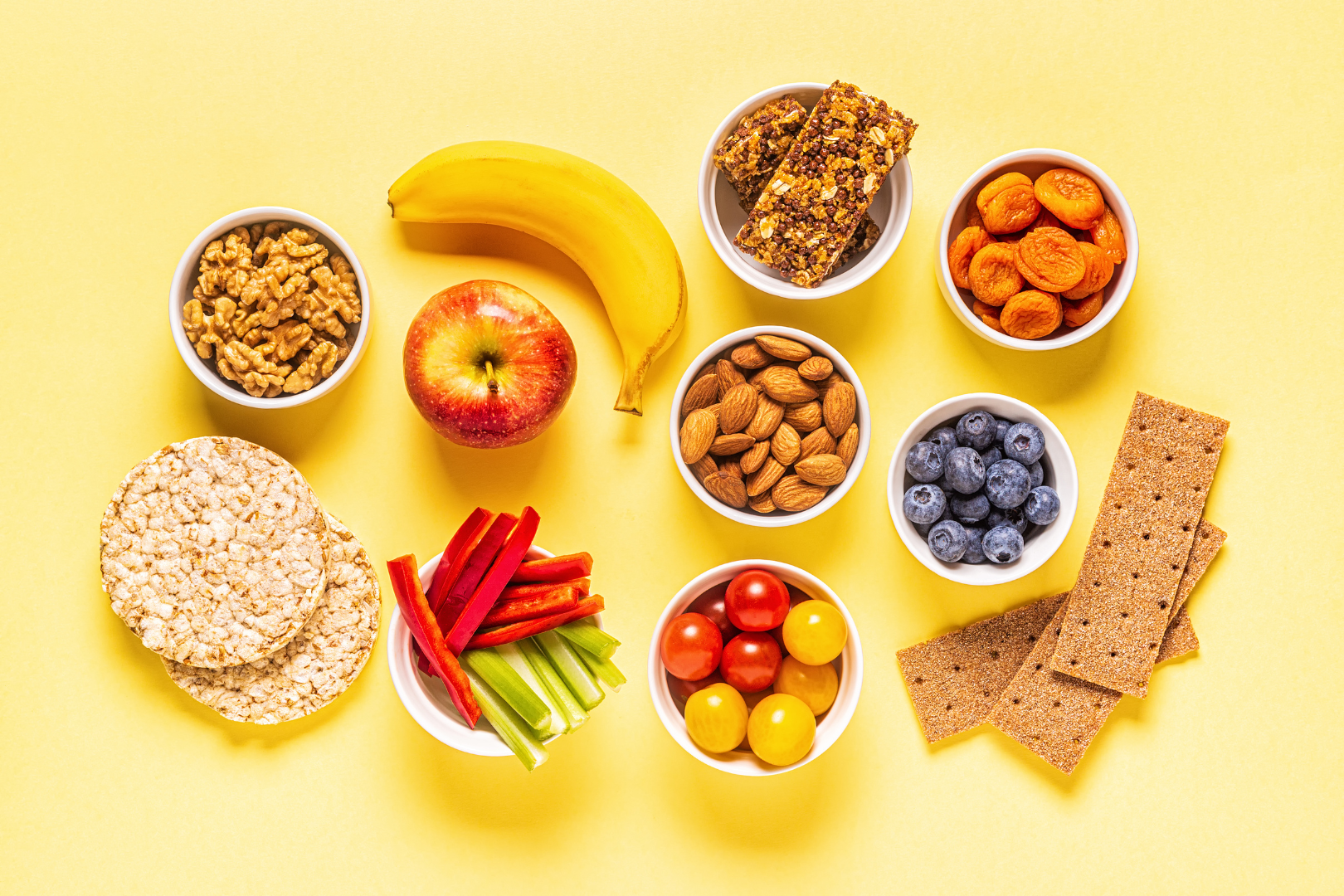
Author :
Eunice Adu- Tutu, Dietetic Practicum Student. Reviewed by Dahlia Abou El Hassan, MScFn, RD, Food Services Registered Dietitian
Snacking
Many students often wonder what exactly makes a balanced snack. First and foremost, snacking is a small portion of food we eat to provide us with a quick source of energy between meals. One of the benefits of snacking is that they come in different forms and can be enjoyed mindfully. However, not all snacks are nutritiously balanced. A well-balanced snack usually consist of a carbohydrate paired with a protein. Carbohydrates provide our body’s main energy source, while protein keeps us full for a long time. Ideally, it is best to focus on a filling, nutrient dense snacks rather than those high in sugar and sodium e.g. pop, potato chips etc. Munching on well-balanced snacks is a great way to maintain a healthy eating regimen.
When it comes to snacking, it is important to practice eating in moderation. One of the ways to do so is by portioning them into a bowl rather than eating them directly from the original package. Additionally, only indulge in a snack if you are truly hungry rather than eating them as a response to stress or boredom. To prevent over-snacking, limit distractions from electronic sources or books when snacking. It is also a great idea to keep a healthy snack nearby for those moments when you feel a sense of hunger. Grab-and-go snacks are usually ideal for such moments. Some examples of healthy grab-and-go snacks to carry can include fruits, nuts, yogurt or cut-up vegetables. These snacks are worth having during those busy days at school, work or in between activities.

Key Components to Include in a Snack
Consuming a balanced snack requires a key element that promotes good health. You may have heard of the word is fibre. Fibre is a type of carbohydrate that is found in fruits, vegetables, oatmeal bars, or whole grains etc. To take their snack options to the next level, pair fibre-rich foods with a protein source. Protein aids in slowing digestion to keep us feeling full longer. If you are looking for balanced snack ideas that incorporates a carbohydrate and protein, refer to the table provided below. During those instances when certain snacks may not available on hand, students can also opt to buy healthy prepackaged snacks that are nutritiously balanced. For example, crackers with hummus or canned tuna to save time during those hectic days.
| Snack Combinations | *** |
|---|---|
| Carbohydrate | Protein |
| Whole wheat crackers | Tuna |
| Rice cake | Nut butter |
| Carrots | Hummus |
| Berries | Greek yogurt |
| Grapes | Cheese |
| Apple slices | Nut butter |
| Roasted plantain | Nuts |
Aim to have three to four different snack options each week that consist of various whole grains, fruits and vegetables. This way, you can make your snack routine more enjoyable and interesting. Don't forget to always choose water as your beverage of choice more often to keep your body hydrated. Drinking water with your meals help the food to move along your body smoothly, reducing your chances of constipation. By following these guidelines, you can build a balanced and fulfilling snack routine that promotes good health. For additional snack ideas check out Alberta Health Services.
For students looking to stock up their mini-fridges with on- the-go snacks, visit the following food places on campus:
- The Stong, Winters, and Glendon Marche dining halls offer a variety of healthy snacks options eg. Fruit cups, yogurt, fresh fruits, sandwiches, and side salads etc.
- Central Square's Grill station serves scrumptious avocado toast and fruit cups to go.
- Qoola Fresh, located at York Lanes, offers a reasonably-priced parfait, that is a must try.
NOTE: the content in this blog is solely for informational purposes and not a substitute for informed medical advice. If you are a student on a York U dining plan consult with the on-campus Registered Dietitian for all nutrition-related inquiries.
